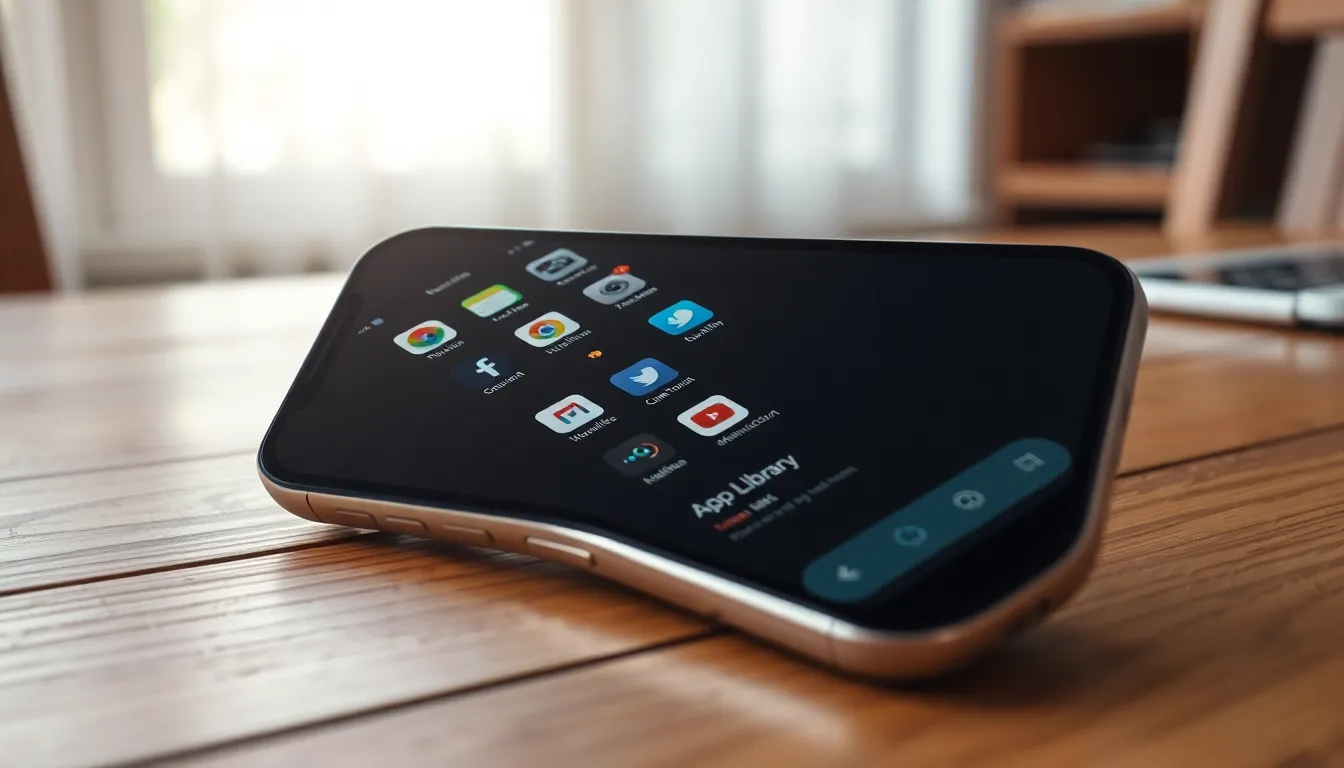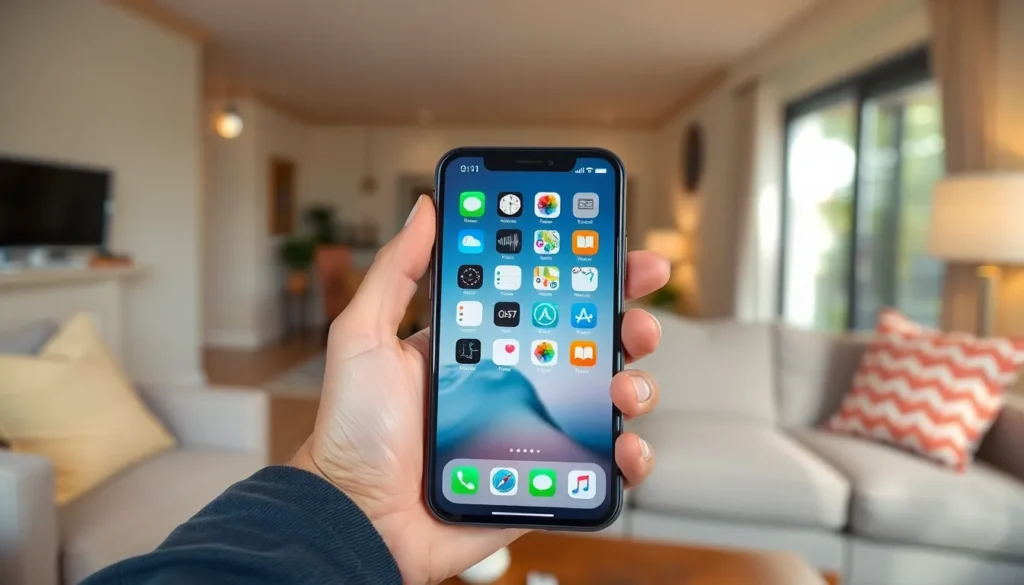In a world where privacy is king and organization is the royal court, hiding apps on an iPhone is the ultimate power move. Whether it’s that embarrassing game or the shopping app that keeps draining the bank account, sometimes out of sight truly means out of mind. Imagine your friends scrolling through your phone and finding nothing but productivity apps and your meticulously curated photo gallery. Pure genius!
iPhone Hide Apps
Hiding apps on an iPhone maintains user privacy while allowing for a more organized home screen. This feature offers significant benefits for those who value confidentiality and aesthetics.
What It Means to Hide Apps
Hiding apps refers to the ability to conceal certain applications from the home screen or app library. Users can achieve this through built-in settings or third-party tools. When an app is hidden, its icon disappears, but the app remains accessible via search. This strategy helps keep the device interface clean and clutter-free.
Reasons to Hide Apps on Your iPhone
Several reasons justify the practice of hiding apps on an iPhone. Privacy concerns rank high, especially for individuals who share their devices with others. Specific apps, like social media or shopping tools, may contain sensitive information. Additionally, minimizing distractions can enhance productivity by limiting access to non-essential apps. Users also appreciate a streamlined home screen that presents only the most relevant applications, contributing to an organized digital environment.
Methods to Hide Apps on iPhone

Hiding apps on an iPhone can enhance privacy and organization. Several methods allow users to keep specific applications out of sight.
Using App Library
The App Library feature automatically organizes all installed apps into categorized folders. Accessing the App Library requires swiping left past all home screen pages. Users can find apps quickly without cluttering their home screens. To hide an app, simply move it to the App Library by long-pressing the app icon and selecting “Remove App.” Opting for this method keeps the app accessible while maintaining a clean appearance on the main home screen.
Creating Folders to Hide Apps
Creating folders allows users to group multiple apps together. To create a folder, drag one app over another until a folder appears. Users can then add additional apps into that folder, helping to conceal them from the main view. Naming the folder can enhance organization as well. This approach minimizes visible apps on the home screen while still providing access to grouped applications when needed.
Utilizing Screen Time Restrictions
Utilizing Screen Time restrictions offers a way to limit access to certain apps. Enabling this feature requires navigating to Settings, then Screen Time, and selecting “Content & Privacy Restrictions.” Users can choose to restrict specific apps, preventing them from appearing on the home screen. This option is useful for keeping unwanted distractions at bay and ensuring a focused user experience.
Alternatives to Hiding Apps
Exploring alternatives for managing apps can enhance privacy and organization on an iPhone. Users can consider various methods beyond simply hiding apps.
Using App Limitations
Setting app limitations provides a way to restrict usage effectively. The Screen Time feature enables users to limit specific apps based on time or access. This approach prevents distractions, making apps invisible during defined periods. Parents often use this method to control children’s access. When set up, app icons won’t appear on the home screen, maintaining a cleaner and more focused environment. Achieving a balanced digital interaction becomes easier through smart limitations.
Using Third-Party App Managers
Third-party app managers offer innovative solutions for app organization. These applications, available in the App Store, provide users with additional control over their app library. By grouping or categorizing apps, users simplify navigation, increasing efficiency. Some app managers allow custom naming or icon selections, further personalizing the device. Integration with existing apps is seamless, promoting streamlined usage. These tools can significantly enhance the overall user experience on an iPhone.
Troubleshooting Hidden Apps
Hidden apps can sometimes cause confusion. Users may forget which applications they’ve concealed or how to retrieve them.
Recovering Hidden Apps
To recover hidden apps, use the App Library. Open the App Library by swiping left on the home screen until the last page. Search for the app using the search bar or browse through categorized folders. If the app remains elusive, check settings to ensure it’s not restricted. Go to Settings, select Screen Time, and review app limits. Users can also recheck if the app is part of an App Store purchase, restoring it from there if necessary.
Managing App Visibility Settings
Managing app visibility settings enhances organization. Navigating to Settings helps users adjust preferences. Locate the General tab and then the iPhone Storage section. Here, users can see which apps occupy space and adjust their visibility. Setting restrictions via Screen Time limits access during certain hours, keeping distractions at bay. Additionally, organizing apps into folders provides a clear layout while still allowing access when necessary. Grouping apps effectively helps maintain a clean, user-friendly home screen.
Conclusion
Hiding apps on an iPhone offers users a practical solution for enhancing both privacy and organization. By concealing apps that may not align with a polished image or that could distract from productivity, individuals can create a more streamlined digital environment.
Utilizing features like the App Library or Screen Time restrictions not only helps in managing app visibility but also fosters a focused user experience. With the right strategies in place, users can easily maintain control over their devices while ensuring that essential applications remain accessible. Embracing these techniques can lead to a more efficient and organized iPhone experience.
